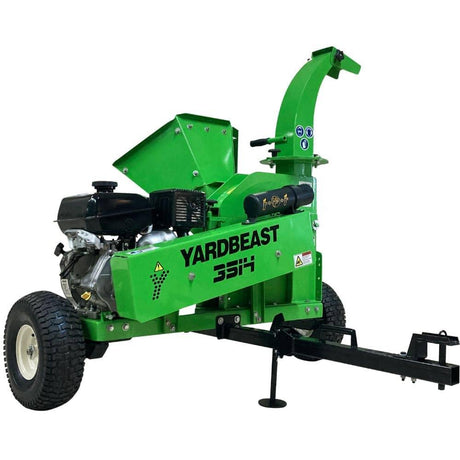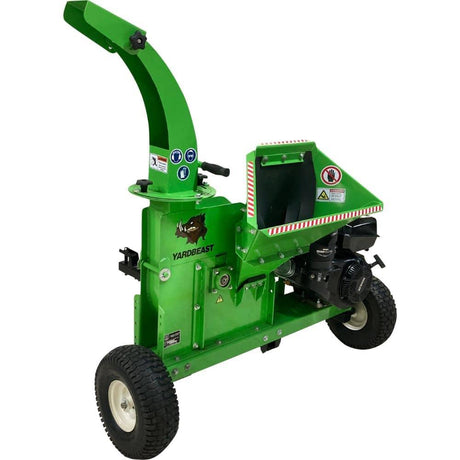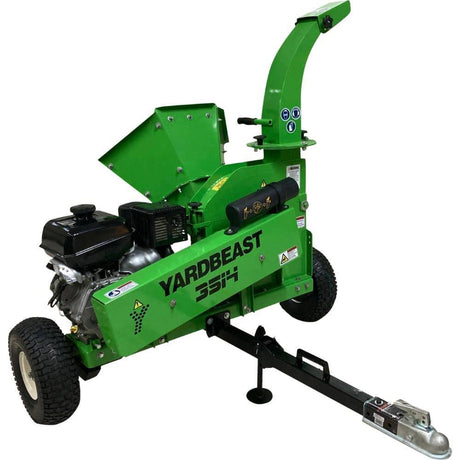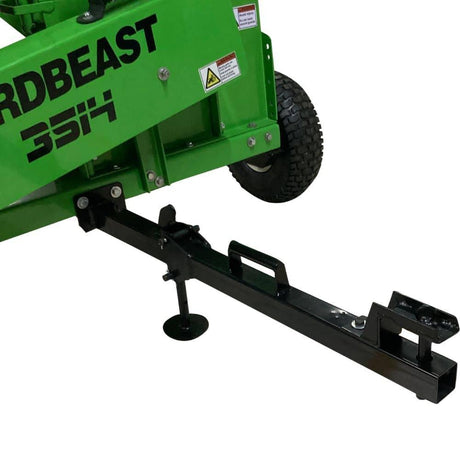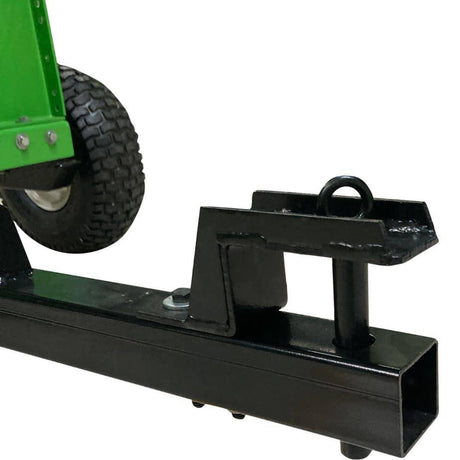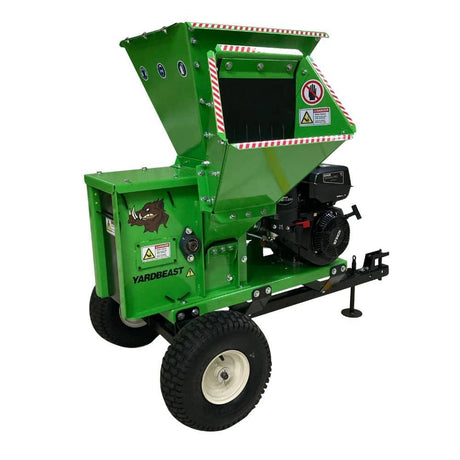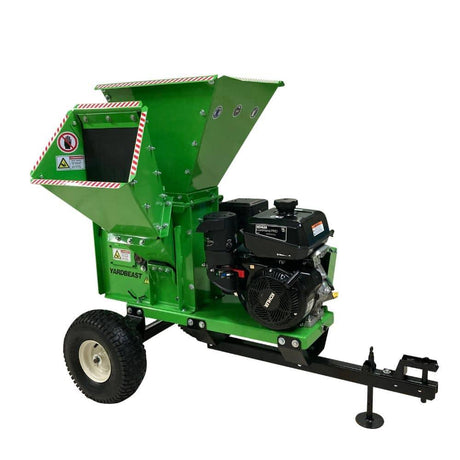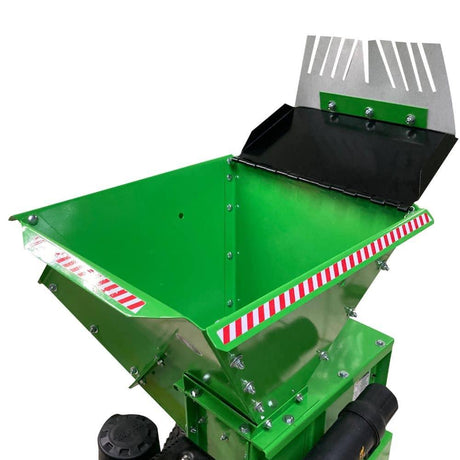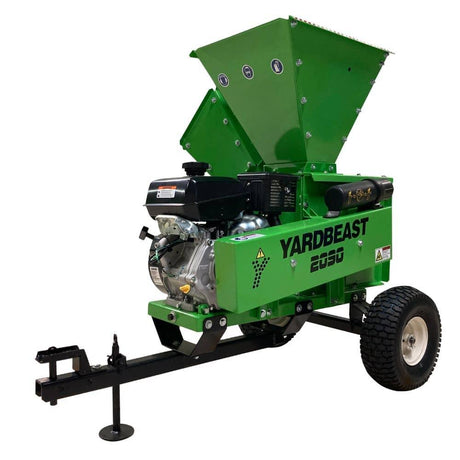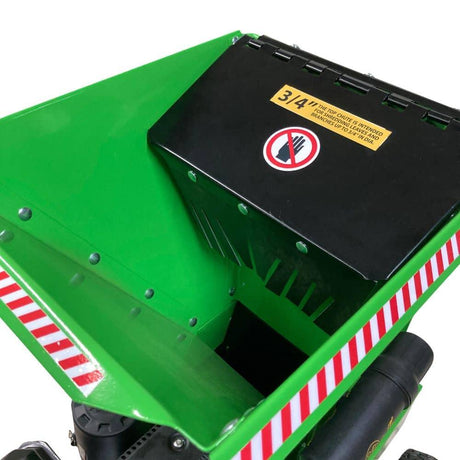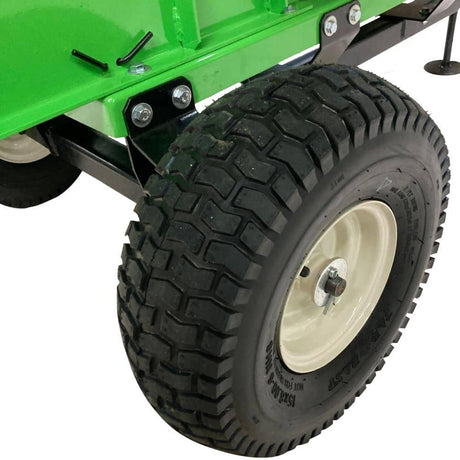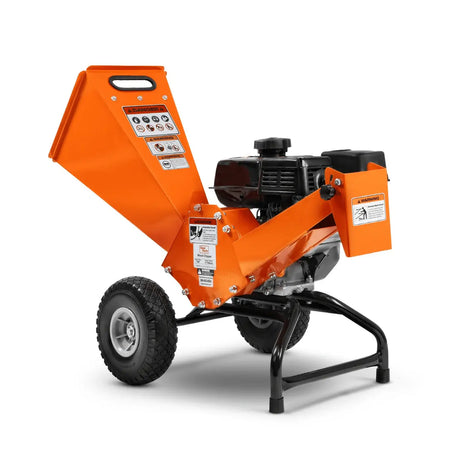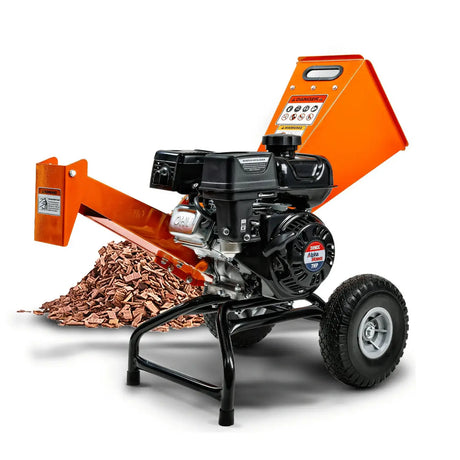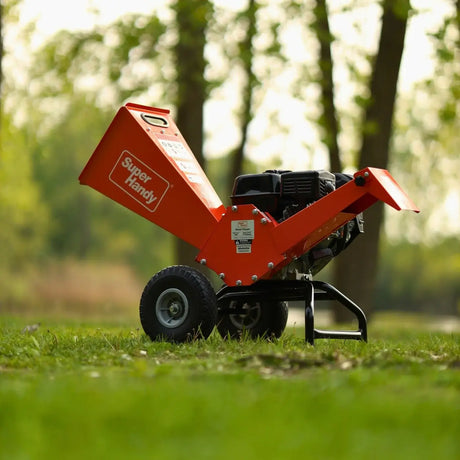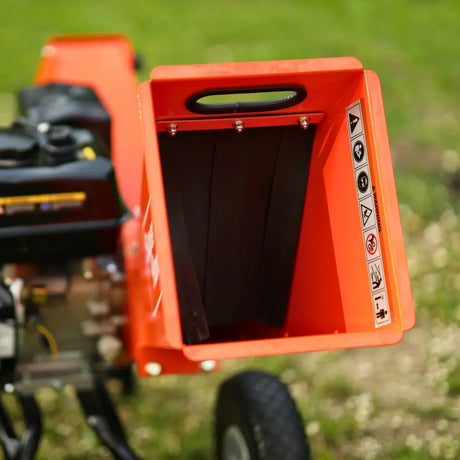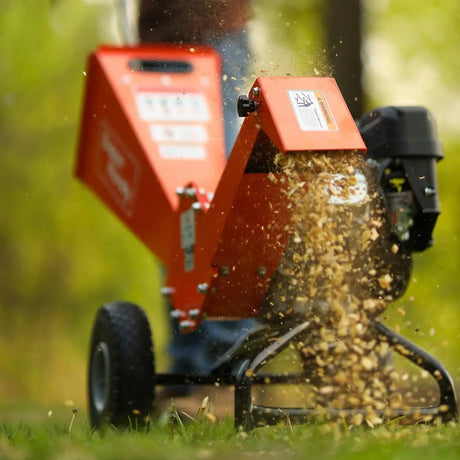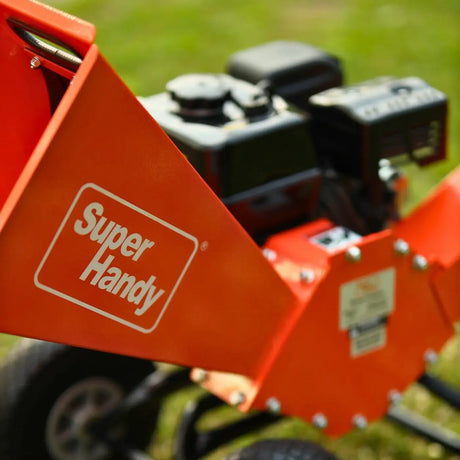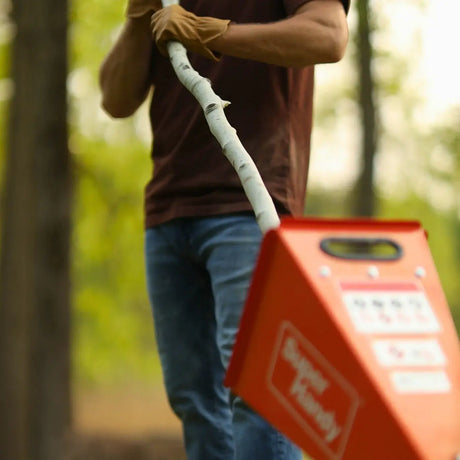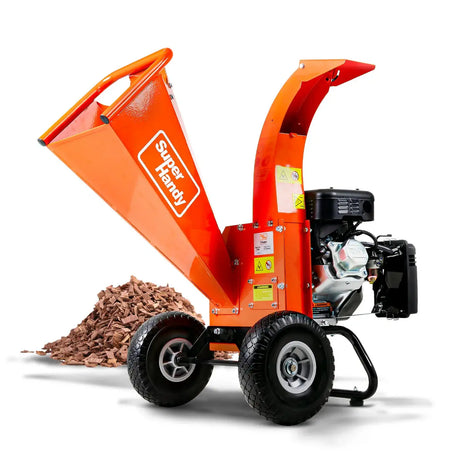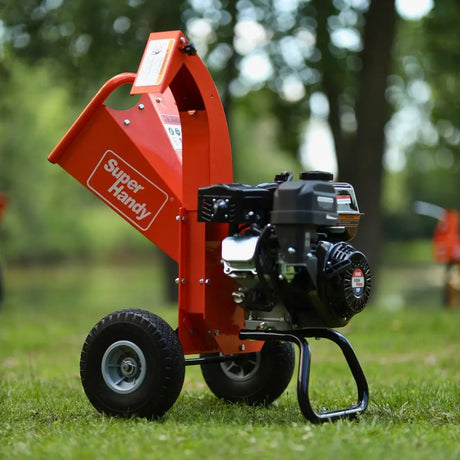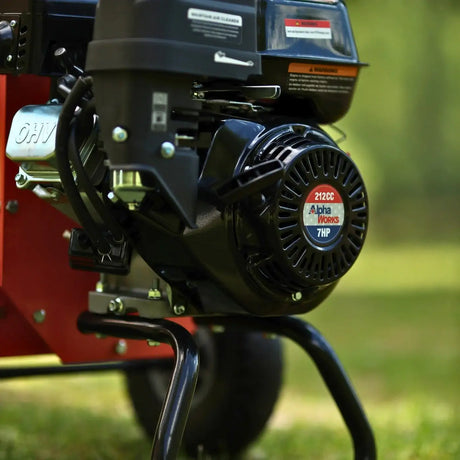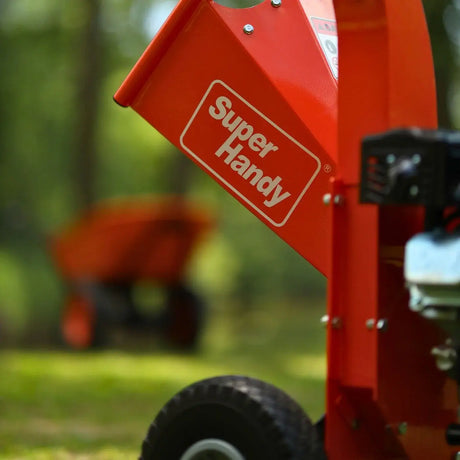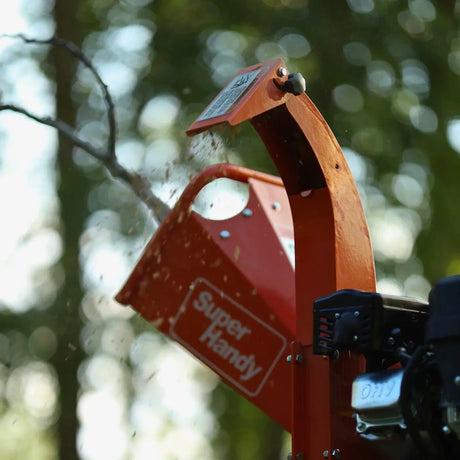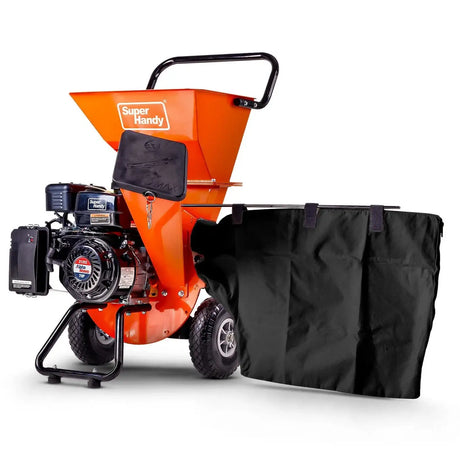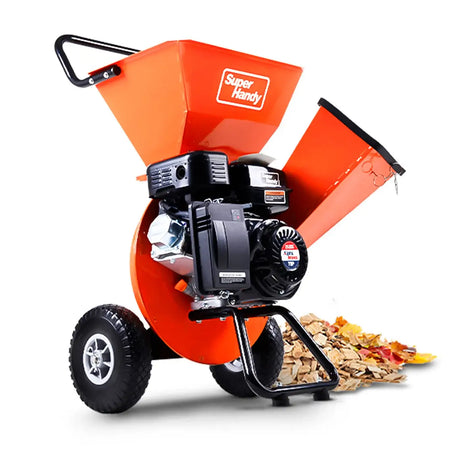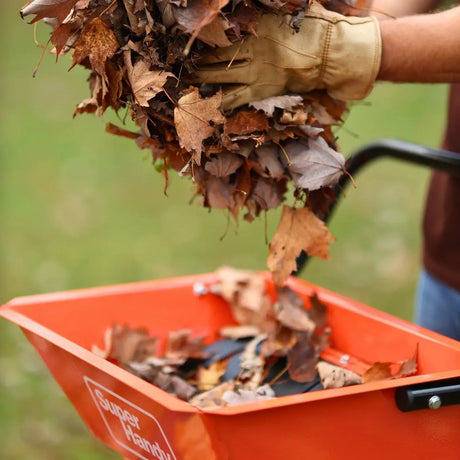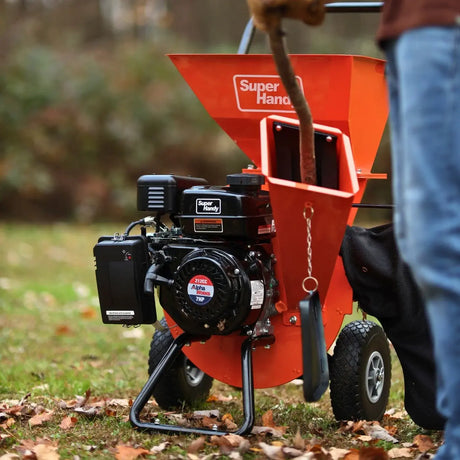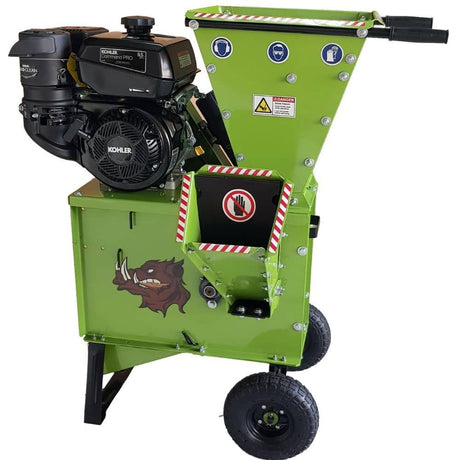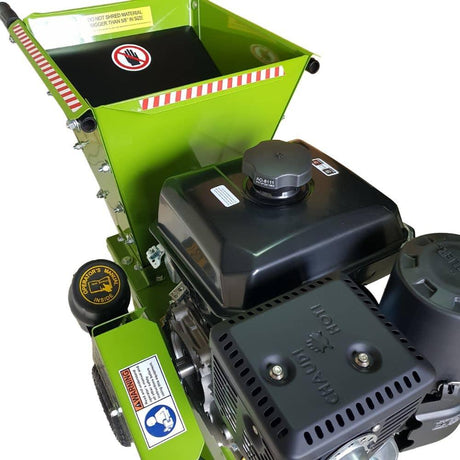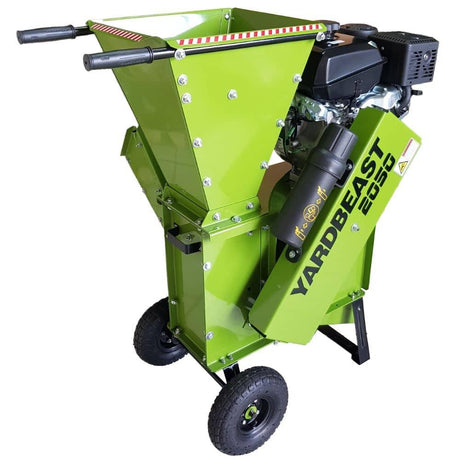- 13% off
Yardbeast
Yardbeast 3514ATV 3.5-Inch Professional Gas Wood Chipper
$2,999.99$3,459.99Unit price /Unavailable - 13% off
Yardbeast
Yardbeast 2090 3.5-Inch Gas Wood Chipper Shredder
$3,299.99$3,799.99Unit price /Unavailable - 8% off
SuperHandy
SuperHandy 3-Inch Gas Wood Chipper Compact - 7HP 212CC
$549.99$599.99Unit price /Unavailable - 6% off
- 13% off
Yardbeast
Yardbeast 2050 3-Inch Gas Wood Chipper Shredder
$2,599.99$2,999.99Unit price /Unavailable
3-Inch Wood Chippers: Compact Power for Everyday Yard Work
Need a machine that’s easy to handle but still gets the job done when you’re clearing branches and brush? A 3-inch wood chipper strikes the perfect balance. Small enough for residential spaces, yet powerful enough to take on limbs up to 3 inches thick—these chippers are ideal for homeowners, hobbyists, small farm owners, and landscaping crews who don’t need full-blown industrial power.
In this guide, we’ll walk through everything you need to know about 3-inch wood chippers: what they can handle, how they compare to electric and smaller models, what features matter most, and how to choose one that fits your needs. We’ll also cover expert tips, performance insights, and real-world usage examples that highlight their value. Whether you're looking for a best seller with premium product protection or just an efficient chipper shredder that makes yard cleanup easier, this guide has you covered.
Introduction to 3-Inch Wood Chippers
If you’ve ever wrapped up a pruning session or cleaned up after a thunderstorm, you know how fast brush and limbs can pile up. That’s where a 3-inch chipper earns its keep. Designed for limbs up to 3 inches in diameter, these machines convert clutter into valuable mulch with minimal hassle. With a high reduction ratio, these machines are perfect for turning yard debris into fine mulch or useful mulch that benefits your landscaping long-term.
Most residential branches—such as those from maple, birch, pine, and fruit trees—fall within the 1 to 3-inch range. This makes a 3-inch chipper perfect for 95% of homeowner needs. You’ll avoid the high cost and maintenance burden of larger commercial models while still tackling serious yard waste efficiently.
What Are 3-Inch Wood Chippers?
Efficient and purpose-built: These machines are optimized for chipping branches, hedge trimmings, and yard waste up to 3 inches in diameter. That includes softwoods, hardwoods, and even moderately twisted limbs.
Electric vs. Gas-Powered Models:
- Electric 3-inch chippers are quieter, lighter, and require less maintenance. They’re ideal for small yards and occasional use. Most models operate around 15 amps and require a heavy-duty extension cord. However, they often struggle with dense hardwoods and knotted branches.
- Gas-powered 3-inch chippers are much stronger, with engines ranging from 6.5 HP to 9 HP. They deliver more torque and can run for hours without needing a break. Perfect for rural properties, larger lots, and frequent cleanup. They’re noisier (usually 90–110 dB), heavier (100–180 lbs), and require regular maintenance—but they can handle nearly all wood types with ease. Some models can reach a max speed of over 3600 RPM to power through thick limbs with ease.
Compact and mobile: Many models include large, puncture-proof wheels and ergonomic handles for easy transport. Some can be towed behind garden tractors or ATVs, allowing for more flexible use across a property.
Durable and reliable: Key components like high-carbon steel blades, powder-coated steel frames, and reinforced hoppers are designed for longevity. With regular maintenance, a good 3-inch chipper can last years. You can also add a warranty plan or premium product protection to purchase worry free.
Why Choose a 3-Inch Model?
1. Ideal capacity for most homeowners: 3 inches is the perfect threshold for cleaning up tree trimmings and storm debris. You’re not overpaying for excess capacity, and you avoid the limitations of smaller shredders.
2. Faster cleanup: If your current solution involves hauling limbs to the curb or burning brush, a chipper saves time and gives you reusable mulch. The chipper chute and heavy duty engine allow you to feed large volumes of brush without constant supervision.
3. Easy storage and transport: Most models are compact enough to fit in a small shed or corner of the garage, yet portable enough to wheel around the yard.
4. Useful output: The chips are just the right size for mulching, moisture retention, and weed control. You can even use them as walkways or ground cover. Ideal for anyone needing fine mulch or useful mulch with minimal dust.
5. User-friendly design: Recoil or electric starts, intuitive throttle controls, and basic safety systems make these units accessible to nearly anyone.
6. Versatile utility: Whether you chip monthly or seasonally, these units adapt well to varying workloads and materials. They’re also suitable for use in areas without electricity—perfect for rural properties or large lots. Some best seller models come pre-assembled for quick setup and may include free protectors or accessories for added safety.
Key Features and Benefits of 3-Inch Wood Chippers
Power and Performance
Engine power: Most 3-inch gas chippers come equipped with engines between 6.5 and 9 HP. This range offers enough power for both residential and light commercial use. A 7 HP engine typically produces 10–11 ft-lbs of torque, capable of sustaining high blade speeds even under load. Look for a model rated at 8/55–115 for power and reduction efficiency.
Blade system: Dual-edge, reversible blades extend service life. Hardened steel or carbide-tipped blades are best for durability and performance. A sharp, high-quality blade can chip up to 150 lbs of wood per hour depending on feed conditions.
Flywheel or drum mechanics: These systems store kinetic energy, helping maintain momentum and minimize stalling. Heavier flywheels (20–30 lbs) provide more consistent performance.
Field tip: Before starting a session, inspect blades and tighten bolts. Dull or loose blades not only underperform—they can also damage the motor over time.
Self-Feeding and Quick Discharge
Feeding system: Gravity-fed chippers are common and effective for straight branches. Some models include self-feeding chutes that make it easier to handle odd-shaped or forked limbs. An extra large hopper can speed up the feeding process, especially with bulky yard debris.
Discharge chutes: Adjustable discharge directions help you aim chips into a tarp, bag, or wheelbarrow. Some premium models offer high-velocity discharges that prevent clogs and improve spread. Discharge height typically ranges between 20" to 35" from the ground.
Pro tip: For best results, feed dry branches trimmed to 2–3 feet. Avoid loading in large bundles of leaves or long, wet vines, which can tangle the blades or slow performance.
Chip Quality and Mulch Output
Mulch consistency: Most 3-inch chippers create medium-sized chips (1–2 inches). This size is ideal for garden beds, tree rings, and erosion control. It retains moisture, reduces runoff, and suppresses weeds.
Output volume: Expect to produce around 8–12 cubic feet of mulch per hour. A full pickup truck bed (approximately 2 cubic yards) would take about 2–3 hours to fill depending on material size and condition.
Saves money: With mulch prices ranging from $30 to $50 per cubic yard in many areas, creating your own chips pays for the machine in 1–2 seasons. The chipper shredder design ensures a reliable reduction ratio, reducing your yard waste by up to 10:1 or even 12:1.
Maintenance tip: Clean or swap the screen regularly to maintain consistent chip size and prevent discharge blockages.
Ease of Use and Safety
Controls: Look for color-coded levers and clearly marked start/stop switches. Some models offer throttle levers, choke knobs, and fuel shut-off valves for quick access. Assembly is typically straightforward, and most units come with simple instructions to get started.
Safety features:
- Blade guards and hopper covers
- Automatic shut-off if the hopper is opened
- Emergency stop bar or toggle switch
- Rubber flaps at the hopper opening to block kickback
Maneuverability: Most 3-inch models feature pneumatic tires and built-in handles. Look for wide bases for added stability, especially on uneven terrain. Chipper weights usually range between 100 to 180 lbs, making wheel quality important.
Noise and emissions: Gas models run at around 90–110 decibels—ear protection is strongly recommended. Electric models are quieter (typically under 85 dB) and produce zero emissions at the point of use. Either type is great for yard work when used responsibly.
Safety guidelines: Always wear ANSI-rated gloves, safety glasses, and hearing protection. Never insert hands or tools into the hopper while the machine is running. Keep a first aid kit nearby when operating any power equipment. Some models include free protectors and other safety add-ons for extra peace of mind.
Use Cases and Scenarios
Homeowners and Hobby Users
Weekend warriors rejoice: Whether you’re clearing seasonal brush, tidying fruit trees, or managing landscape waste, a 3-inch chipper keeps your yard in shape.
Space-saving design: With most units standing under 5 feet tall and under 30 inches wide, they fit comfortably in a garage, shed, or covered patio.
Practical savings: Turning branches into mulch on-site saves both time and money over disposal or rental options. Some areas charge $20–$40 per yard for mulch, making a chipper a smart long-term investment.
Small Crews and Part-Time Pros
Contractor-ready: Landscapers and groundskeepers can use a 3-inch chipper for smaller contracts, mulch generation, or quick property cleanups. The compact footprint and portability mean it’s ideal for jobs that don’t justify hauling a full-sized commercial chipper.
Built tough: Favor units with powder-coated steel and heavy-duty fasteners. Replaceable blades and accessible engine compartments make maintenance straightforward.
Flexible use: From trimmings to garden waste, these chippers are up for the task without requiring trailer-sized storage or industrial-level upkeep. Many models offer 10:1 or 12:1 reduction ratios. They also handle pine cones with ease—no need to sort them out before feeding.
Real-Life Experience and Advice
Case example: A homeowner in a wooded suburb chips tree trimmings twice per month. Their gas-powered 3-inch chipper has lasted three seasons with only blade sharpening and oil changes.
Field advice: Keep a backup spark plug, blade wrench, and small tool kit nearby. Many clogs can be cleared in minutes with basic tools and know-how. Some users report being impressed by how easily these machines handle awkward limbs and thick brush—no more overfilled yard waste bags.
Expert tip: Clean your chipper thoroughly after use—especially the feed chute and discharge area. Sap and resin build-up can reduce performance over time. Covered storage or placement inside a shed extends the machine’s life significantly.
Comparisons and Buyer Guidance
3-Inch vs. Smaller Chippers
More power, fewer jams: Electric units often max out at 1.5–2 inches. A 3-inch gas chipper offers smoother performance and better material handling. The extra diameter capacity means fewer pre-cuts and faster yard cleanup.
Productivity boost: With larger intake and more torque, you’ll finish jobs in half the time with fewer stops. It’s especially useful when working with large volumes of limbs after storms or seasonal pruning.
Cleaner output: Chips are more uniform, making them more useful in landscaping and compost applications. The chipper chute ensures controlled discharge with minimal mess.
When to choose electric: For light pruning, occasional use, or suburban areas where noise is a concern, an electric 3-inch wood chipper is quiet, clean, and effective—as long as you're not pushing it beyond limits.
Cost vs. Value
Better ROI: While more expensive than small shredders, a quality 3-inch chipper delivers years of use and cuts down on outsourcing yard cleanup. Many users report that their purchase paid for itself within the first year.
Lower repair costs: Durable construction means fewer breakdowns. Focus on models with good part availability and manufacturer support. Buying from a store with a solid warranty plan or premium product protection ensures longevity.
Longer service life: With simple upkeep—blade sharpening, engine oil, and fuel checks—these machines can run strong for years.
Pro tip: Avoid overly cheap models with plastic components or non-branded engines. Engine reliability and frame durability are key. Look for units with a history of strong customer review scores and easy access to replacement parts.
Choosing the Right 3-Inch Chipper
- Know your average branch size and volume
- Decide between electric (quieter, lighter) vs. gas (stronger, more versatile)
- Look for OHV gas engines with reliable brands (e.g. Kohler, Honda, or similar)
- Choose steel blades over aluminum
- Compare chute height and discharge angles
- Review wheel size and transport features
- Check for user reviews on ease of assembly and startup
- Make sure parts and customer service are accessible
- Look at reduction ratio, noise level (usually 90–110 dB for gas), and hopper size for feeding comfort
- If you're planning to purchase online, be sure the unit is in stock and eligible for delivery in your area
Final Thoughts
If you want a reliable, compact, and powerful yard tool that handles real work without taking over your garage, a 3-inch wood chipper is the sweet spot. It’s big enough to tackle the tough stuff, yet small enough to manage solo. Whether you’re upgrading from a basic shredder or buying your first chipper, this size delivers the best of both worlds: efficiency and ease.
Gas-powered models offer maximum strength and independence, while electric models provide quiet, low-maintenance operation. Either way, a 3-inch chipper turns yard debris into something useful—and helps you keep your property looking great all year long.
Invest once, use it for years, and watch your yard work transform from a chore into a resource-producing routine. You can purchase worry free by choosing a model with solid build quality, high reduction ratio, and positive review history. Don’t forget to check if the unit is a best seller, and if it comes with assembly tools, free protectors, or a chipper chute designed for heavy duty performance.
FAQ: 3-Inch Wood Chippers
What Can a 3-Inch Chipper Handle?
What Can a 3-Inch Chipper Handle?
- Branches up to 3 inches
- Green and dry wood
- Brush, twigs, pine cones, and yard trimmings
- Mulberry, maple, pine, birch, and fruit trees
How Much Maintenance Is Required?
How Much Maintenance Is Required?
- Clean discharge and hopper after every use
- Sharpen blades every 10–15 hours of use
- Check spark plug, air filter, and oil levels regularly
- Replace oil every 25–50 hours depending on engine type
- Electric units require less maintenance—just blade cleaning and occasional inspection
Is It Suitable for All Wood Types?
Is It Suitable for All Wood Types?
- Works best with dry or cured wood
- Wet, stringy vines may clog or reduce output quality
- Pre-trim knotted or forked limbs for smoother feeding
What Safety Features Should I Look For?
What Safety Features Should I Look For?
- Hopper safety covers
- Auto shut-off systems
- Clearly labeled emergency stops
- Safety decals and instruction guides
- Rubber flaps and feed paddle included
How Do I Get the Best Results?
How Do I Get the Best Results?
- Use trimmed, dry wood between 1–3 feet
- Feed one branch at a time
- Keep engine running at full throttle
- Let the chipper clear itself before adding more material
- Store indoors to avoid rust and moisture damage
Example: A seasoned DIYer shared that by keeping their branches uniform in length and adjusting feed speed, they consistently produced mulch perfect for garden use.

